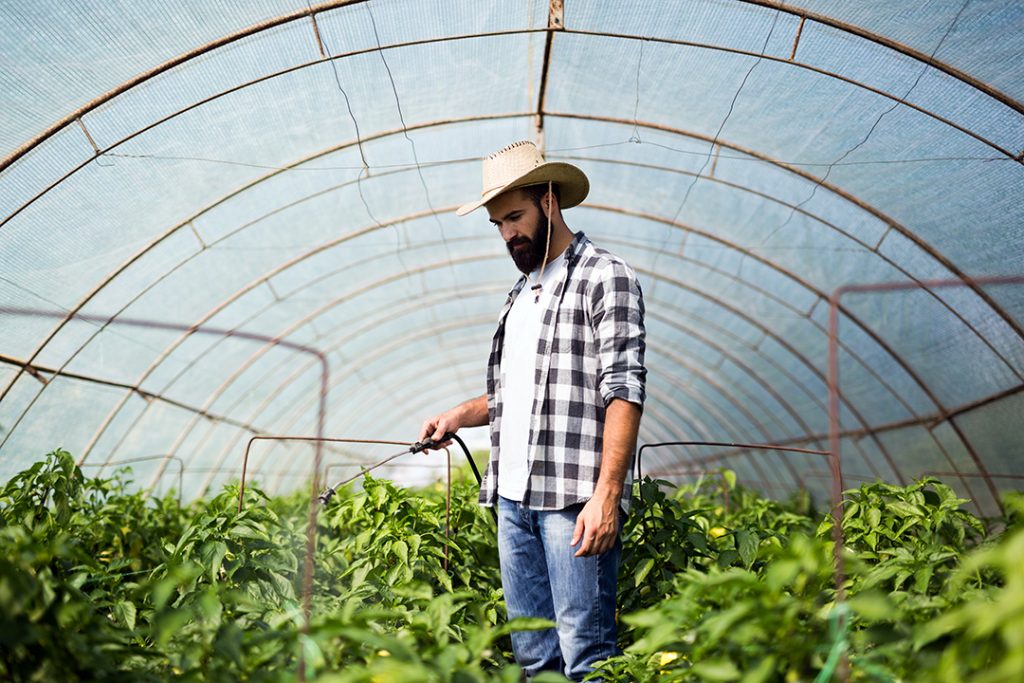
If a wayward teenager could be redirected by a sudden and permanent injection of biological material, his or her reaction might be comparable to that of a wide range of agricultural plants. Growers and specialty chemical manufacturers are applying the shots more frequently as part of an expanded area of plant biology called biotechnology.
They are finding and applying biological materials that boost plant growth, increase resistance to disease and pests, and improve the best qualities of all kinds of plants from rhubarb to rutabaga. It amounts to a whole new aspect of plant growth and protection with exciting possibilities, but the concept is as old as dirt.
Application in California’s mammoth citrus industry includes a gene-mending process in several citrus fruit varieties including navel oranges and some mandarins. It is aimed at increasing crop yield, resisting stress and disease, and expanding the health benefits of the fruit produced. Growers and consumers are equally excited about those outcomes.
Top of the list of wayward behaviors in the citrus industry is Huanglongbing (HLB) disease, carried by the Asian Citrus Psyllid (ACP). All aspects of California’s citrus industry are on alert and on duty to learn all the ways the disease can be averted and its carrier controlled. Both actions are beginning to evaluate and employ generous applications of biotechnology.
Biotechnology has led scientists to drastically alter the nature of male members of the pink bollworm through radiation, making them both impotent and sexually unattractive to females of the species. First radiated by the multi-millions, then dispersed from airplanes, helicopters or powerful ground-based cannon they met ultimate rejection as females by the millions either avoided them or mated with them reluctantly, and without a resulting pregnancy. The pink bollworm was recently determined to be eradicated.
Biotech attracted considerable attention 30 years ago, when it was learned that a compound identified as Bacillus Thuringiensis (BT) could be translocated into the systems of some plants, giving them a kind of internal resistance to certain diseases. Biologists at various agricultural chemical companies have joined with scientists at the U.S. Department of Agriculture and those at many universities to expand the use of such built-in inoculations.
At the commercial level, the compounds that can be sprayed on crops to cause them to create their own resistance to pests and diseases or to beef up size, taste, color or keeping qualities are an instant hit. Magazines and other publications that circulate to farmers and farm managers were full of ads and editorial material touting the use of biotech materials and methods.
Although the use of commercial biotechnology across the agricultural frontier is still at an early stage, it holds a special promise as a partial alternative to pesticides. When biotech materials are applied as a spray, the worst that the compound offers, is an unusual odor but nothing in it is toxic or otherwise harmful to anyone or anything. Farmers and other applicators are relieved not to don “moon suits” or other protective gear when they handle harmless biotech compounds.
Even soils can be improved through biotech methods. If analysis reveals that a soil has been neglected, overworked or otherwise damaged it may be restored through the application of certain biotech materials. After all, growing plants receive nourishment through the soil (or other growth medium) no matter how well they are fortified internally.
Among those who appreciate and confirm biotech methods most heartily are growers who employ strictly organic methods of production. Protecting their crops from pests and disease with conventional crop chemicals is not allowed but warding them off with biotechnology adds strength and depth to their argument in favor of organic practices.
Already a win-win method for improving food plants, biotechnology is sure to become even more astounding as soon as the method can incorporate a teen-ager behavior application.








